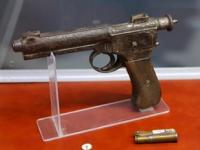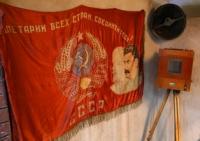Вы здесь
Aktogay Archaeological and Ethnographic Museum.


A trip from Karaganda to the village of Shabanbai bi.
“You don't have to burn books to destroy a culture. Just get people to stop reading them”
Ray Bradbury.
Excursion to the museum in Karaganda.
Aktogay Archaeological and Ethnographic Museum was founded in 1986. The area of the museum is 265 square meters, the exhibition area is 223 square meters. Until 1991, the museum was a branch of the Zhezkazgan Museum of History and Local Lore.
By order No. 91 of the Cabinet of Ministers of the Kaz.SSR of May 7, 1991, the museum became an independent museum - the Aktogay Archaeological and Ethnographic Museum. The formation of the Aktogay Archaeological and Ethnographic Museum was Musataev Amankul, a teacher of drawing and drawing in the village of Aktogay.
He worked as a museum director from 1986 to 1993. In 1999, the museum was reorganized into the Aktogay Archaeological and Ethnographic Museum. The museum has 2435 exhibits, collections of archeology, ethnography and decorative and applied art.
The creation of the museum was facilitated by numerous monuments of archeology and cultural heritage in the territory of the Aktogay region. Ancient monuments, starting from the Stone Age and the Bronze Age, ending with the epochs of Saks, Huns, Turks, Kipchaks.
The main attraction of the Aktogay Museum is a stuffed half-century ago Turanian tiger, which was also called the Transcaucasian or Balkhash tiger. This subspecies was distinguished by a bright red color, as well as the length of the stripes on the body, they were longer and had a brownish tint.
The Balkhash tiger was inferior in size only to the Bengal and Ussuri, but at the same time its mass reached 240 kg. The habitat of this predator was reed (reed) thickets along river banks. According to information, the Turanian tiger migrated to East Kazakhstan and Altai.
The northern range of the tiger was Lake Balkhash. The dates of the complete extinction of this animal occurred in 1954 to 1961. They were investigated by the Central Kazakhstan expedition, headed by academician Alkey Hakanovich Margulan.
The expedition worked from 1947 to 1977, exploring this region for 30 years. Many monuments of Begazy-Dandybaev’s culture were discovered and scientific annotations prepared. The Aktogay Archaeological and Ethnographic Museum exhibits exhibitions: “Historical Monuments of Medieval Culture in the Territory”, “Decoration of the Kazakh Yurt.” Events are held for public holidays and anniversaries, such as the thematic evening “Front Workers” for International Women's Day and the 60th anniversary of Victory, lectures on “The History of State Symbols and Their Significance”, “What do we know about architectural monuments in the region?”
In front of the building of the museum are mock mounds and stone sculptures of people of the Turkic and Kipchak periods. The museum annually serves over 4,000 visitors, residents of the Aktogay region.
The museum is located at: Aktogay Archeological and Ethnographic Museum, Aktogay village, st. J. Akbay, 1.
Источник:
https://karaganda-region.gov.kz/ru/citizens_cult_6_1/
Evgeny Karimov https://kolesa.kz/read/articles/2012/05/marshrut-n19-2012/
Photos
Alexander Petrov.







